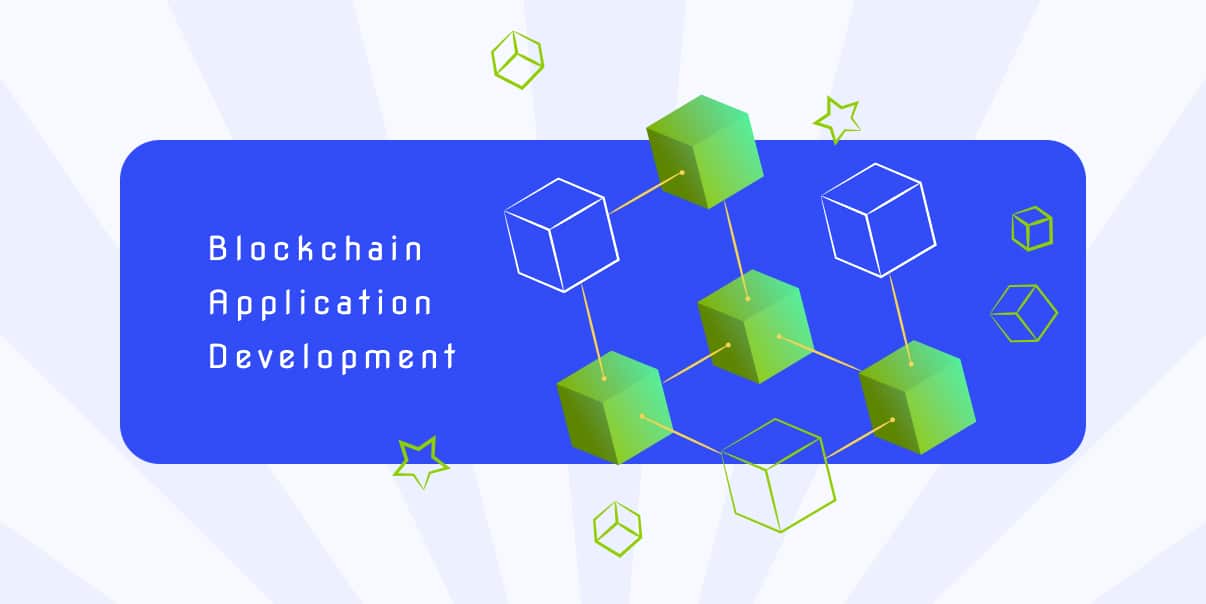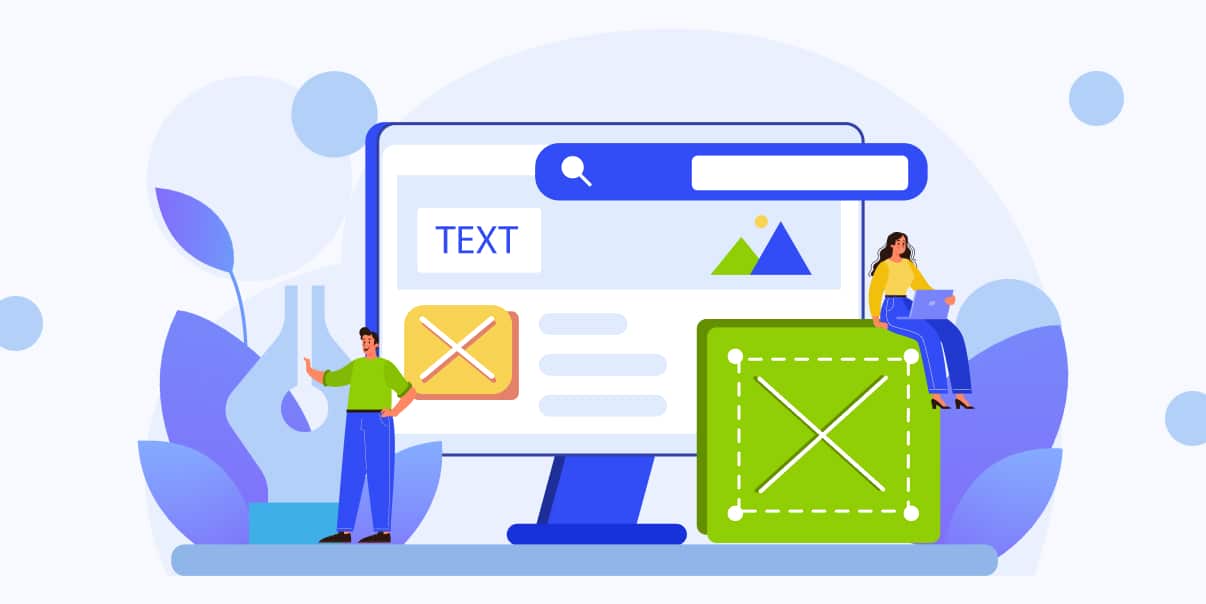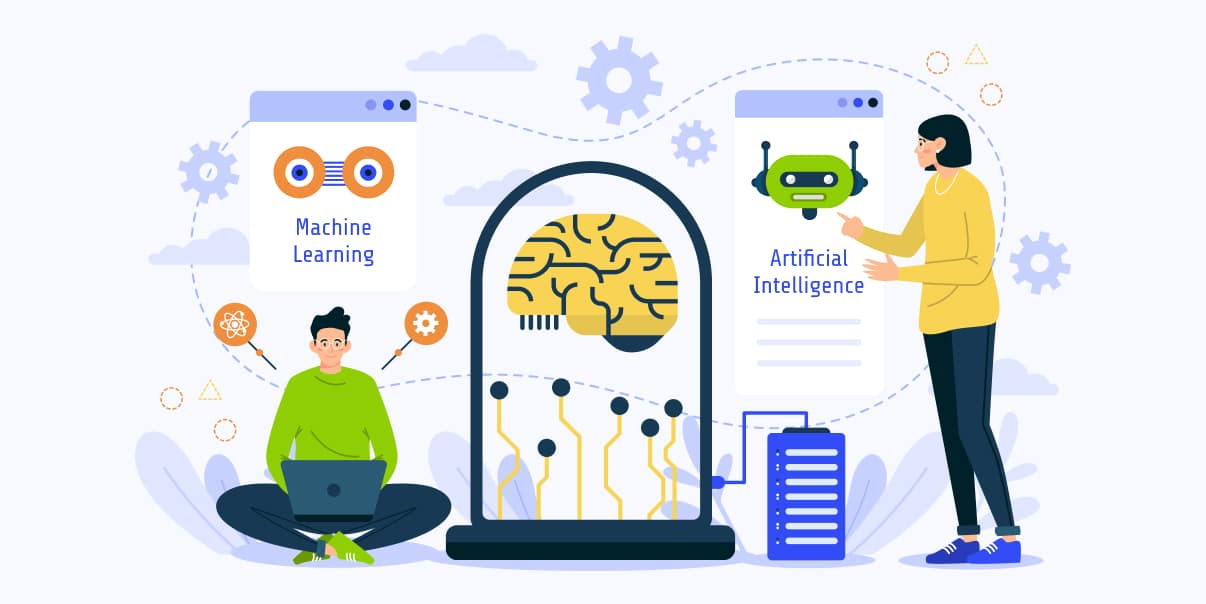Blockchain Application Development: A Complete Guide

Blockchain technology is a groundbreaking way to store information securely in a tamper-proof way. It is a new technology changing how digital transactions work. Blockchain app development is now in-demand as businesses want to protect their data from hackers. Companies can create apps that use this technology to provide users with access to secure financial transactions and digital contracts.
This guide will discuss how blockchain application development works. Plus how it can benefit your business or organization. So, if you’re curious about all the buzz on digital transformation, read on!
What Is Blockchain?
Blockchain is like a massive list where everyone can see the same information. It lets people send money and information without using banks or third parties. It is like a chain because each piece of data links to one another, so it is simple to follow the chain back. Blockchain has many possible uses across various industries.
How Blockchain Works?
Blockchain app development works by having computers run the same software, making nodes. When you send information to another person over the blockchain, it sends it to every node in the blockchain network. The nodes check and ensure that the data is not tampered with before verifying and adding it to the list. This list is then updated across all the nodes and stored in a ledger. It ensures the authenticity of data sent over the blockchain.
Examples of Successful Blockchain Applications
You can use blockchain apps in many ways. So, here are a few examples of successful blockchain apps that you may have heard of:
Cryptocurrency
Cryptocurrencies, like Bitcoin, are digital currencies that use blockchain technology. They create secure and immutable records of all transactions.
Smart Contracts
These automated agreements use blockchain to ensure all parties adhere to pre-established terms.
Supply Chain Management
Companies use blockchain to track shipments as they move through the supply chain. It helps businesses save money and increase customer satisfaction.
Identity Verification
You can also use blockchain apps for identity verification. It allows people to prove their identity online securely. Identity verification is helpful for sensitive activities like bank transactions.
Your business can use blockchain to increase efficiency and reduce costs. And with the help of a reliable application development team, you can keep your data safe.
Benefits of Developing Applications on the Blockchain

Developing applications on the blockchain can help your business become more efficient. You can also save money and ensure that customers feel satisfied. Also, it keeps data safe by using computer networks to verify the information and store it in a ledger. It guarantees no one can tamper with the data or steal it.
Decentralization and Distributed Ledger Technology
Blockchain helps your business by creating a decentralized network with distributed ledger technology. It means that no single entity owns or controls the data. Instead, it spreads across different computers and nodes, making it safer from hackers. Plus, distributed ledger technology tracks transactions easily as they move through the system.
Increased Security and Immutability
Blockchain app development also increases security and immutability. It ensures that only the right people can access confidential data. And this makes it more challenging for malicious actors to steal information. Also, blockchain apps create a transparent system where everyone can see identical records.
Improved Transparency and Trust
Finally, blockchain apps help improve transparency and trust. Blockchain makes it easy for everyone to audit the system. It also allows customers to view all records of transactions from start to finish fast. So, businesses can build trust with their customers by knowing the process is secure.
Challenges of Blockchain App Development
Developing applications on the blockchain has its challenges. It requires specialized knowledge, as well as expensive hardware and software. Also, finding a reliable development team to work with can take time and effort. Blockchain technology is relatively new, so businesses may take time to understand it.
The Complexity of Blockchain Technology
Blockchain technology can be complex to understand. It requires a deep understanding of cryptography, distributed systems, and programming languages. This knowledge is not easy to come by and may take time for developers to learn deeply. But with enough time and resources, you can learn blockchain app development confidently.
Limited Talent Pool of Experienced Developers
Despite its popularity, a limited pool of experienced developers understands blockchain app development. Finding the right team to work on your blockchain project makes it hard. And companies have to wait longer and might pay more to hire developers with the right expertise.
Scalability Issues
Another challenge of developing applications on the blockchain is scalability. Adding more data and transactions to the chain can slow down for some businesses to maintain. Developers need to overcome this so that companies can develop efficient apps.
Types of Blockchain Platforms for Development
Developers can use different blockchain platforms to create and manage their applications. Each has its features, so you need to understand the pros and cons to decide.
Take a look at some of the types of blockchain platforms below:
Public Blockchains
Public blockchains are computer networks used to store data available to anyone. Unlike traditional computer networks, public blockchains allow anyone to view and transfer data. It makes them reliable, as no single user can control or manipulate the data stored on them. Public blockchains let you send money, create smart contracts, and run decentralized apps. Here are the most famous examples of public blockchains:
Bitcoin
Bitcoin is a decentralized digital currency. You can use this public platform for cryptocurrency transactions. Moreover, it lets users send and receive payments securely using the Internet.
Ethereum
It is an open-source platform that supports smart contracts and other decentralized applications. Ethereum works by using a particular type of technology called Smart Contracts. It uses small programs written in code that run on the Ethereum network.
EOS
EOS creates, hosts, and uses smart contracts and decentralized apps. It uses delegated proof-of-stake consensus. And this means only a certain number of EOS Nodes can change the blockchain.
Private Blockchains
Private blockchains, or permissioned blockchains, are like public blockchains but with limited access. It means only a particular group of users can view and transfer data on the blockchain. Private networks offer better scalability, as it is not available to everyone. Below are some examples of private blockchain platforms:
Hyperledger Fabric
This private blockchain platform allows users to create applications with many participants. It has built-in features, like smart contracts and consensus algorithms, making it secure.
Corda
It is an open-source distributed ledger technology designed for businesses and governments. Corda provides scalability benefits as it requires fewer nodes than public blockchains. It enables organizations to store and process data without a central authority securely.
Quorum
Quorum gives each person their unique, unchangeable copy of the data that nobody else can access. It ensures that only you can control who can see or change your information, so it stays secure.
Comparison of the Pros and Cons of Every Type of Platform
Each platform has its set of pros and cons. Understanding each type is essential before deciding which one to use. To help you decide, here are things you should consider:
Public Blockchains
Pros:
- Secure, transparent, immutable data
- Fast and reliable transactions
- Allows users to run smart contracts and decentralized applications
Cons:
- Complex technology
- A limited talent pool of experienced developers
Private Blockchains
Pros:
- Easier to scale
- Secure and reliable data
- Customized access to the blockchain
Cons:
- Not as secure or transparent as public blockchains
- Expensive to maintain
Development Languages and Tools
When developing apps on the blockchain, determine the best programming languages and tools. So ensure to take advantage of this revolutionary technology today.
Popular Programming Languages for Blockchain Development
Programmers need to understand the following languages for blockchain application development:
Solidity
It is the most used programming language for blockchain application development. Solidity has built-in features that let developers write and deploy code on Ethereum.
JavaScript
The most famous programming language for web development is JavaScript. Developers use JavaScript frameworks to create decentralized apps based on the Ethereum blockchain.
Go
Developed by Google, Go is yet another open-source programming language. You can use it for developing decentralized apps run on EOS. It helps developers create secure applications. Additionally, its strict system allows developers to spot code errors before deploying it.
Most Common Tools and Frameworks Used in Blockchain Development
Developers must know the tools and frameworks used in blockchain development. And here are some of them:
Truffle
Truffle helps create, manage, and deploy decentralized apps on the Ethereum network. It also provides an automated testing environment so you can identify problems fast.
Ganache
Ganache allows developers to deploy and test blockchain apps without spending real money. It has features like simulated transactions, accounts with preloaded funds, and smart contracts.
Metamask
It is a browser extension that lets users interact with an Ethereum app and blockchain wallet. Metamask helps developers create secure transactions on the blockchain.
Designing and Building a Blockchain Application
Once you understand the basics of blockchain, you can design and build your app. Of course, this requires some planning beforehand.
Steps in the Development Process
You can successfully develop a blockchain app with the following steps:
1. Defining Your Requirements and Goals
You should know what you want to achieve with your app. So, define your requirements and goals before beginning the development process. It includes the following:
- Researching the use cases of blockchain technology
- Understanding the potential features of your application
- Deciding which blockchain development platforms you will use
- Knowing the blockchain app development cost, which varies on different factors
2. Creating a Design Plan
After you know what your application should do, create a design plan. It helps you structure the code and determine the technologies best suit your app.
3. Developing with Secure Code
Now that you know your application needs, it is time to start coding. Use high-quality code and the best techniques to ensure your data is secure.
4. Testing and Deployment
Once done with the development process, you must test your app before deploying it. Test for errors and fix them before making your app available to users.
5. Maintenance and Updates
Finally, keep your application up-to-date with regular maintenance and updates. It will help you keep your application secure and continue running smoothly.
Best Practices for Designing and Building a Blockchain Application
Designing and building a blockchain application is an exciting process. But it is crucial to keep some things in mind while doing so. Here are a few best practices for designing and building a blockchain app:
1. Understand the Basics of Blockchain Technology
Make sure that you understand the basics of blockchain technology before beginning development. Research well to equip yourself with the necessary knowledge to create a reliable app.
2. Hire Experienced Blockchain Developers
An experienced team of developers is essential for building successful blockchain apps. Look for developers with experience developing blockchain apps and using the best technologies.
3. Test Your App Before Deployment
Testing your application before deployment is vital to ensure it works as expected. Use automated and manual testing techniques to identify errors and security vulnerabilities quickly.
4. Keep Your App Up-to-Date
Keep your blockchain app up-to-date with regular maintenance and updates. It will help you keep your application secure and continue running smoothly.
Deploying and Maintaining a Blockchain Application
Once you have designed and built a blockchain app, it is ready for deployment and maintenance. Deployment involves releasing the application so that anyone can use it. Meanwhile, maintenance keeps the app running by ensuring it is secure and up-to-date. Both are essential steps in ensuring your blockchain app works as expected.
Options for Hosting and Deploying a Blockchain Application
Hosting and deploying a blockchain app is a critical step in the development process. Various options are available, from cloud-based solutions to self-hosting on a local server. Here are some of them:
Cloud-Based Solutions
The most common option is using cloud-based solutions for hosting and deploying an app. It offers scalability and flexibility for businesses.
Self-Hosting on a Local Server
If you are developing an app for a specific purpose, self-hosting on a local server may be more suitable. Self-hosted servers can be deployed and offer better security than cloud-based solutions.
Considerations for Ongoing Maintenance and Updates
Once you deploy your application, you must maintain and update it regularly. It helps ensure that the application is secure and runs correctly. Here are some considerations for ongoing maintenance and updates:
Track Your App Regularly
Check your app from time to time for any security vulnerabilities or threats. Use automated monitoring tools to detect and respond to any issues fast.
Test Your App
Test your application to ensure that it is functioning well. Use automated testing tools and manual methods to identify errors and fix them before they become serious issues.
Keep Your Database Secure
Keep your database safe with the latest security protocols and best practices. Ensure all data stored on the blockchain is encrypted.
Update Your App
Keep your application up-to-date with regular maintenance and updates. It will help you keep your application secure and continue running.
Case Studies of Successful Blockchain Applications
Understanding the applications of blockchain technology is essential for developing successful applications.
Examples of Real-World Blockchain Applications Across Different Industries
Blockchain technology is revolutionizing the way businesses work. Different industries are adopting blockchain technology to improve their services. Here are some examples of real-world blockchain applications in various industries:
Fintech
Financial organizations are using distributed ledger technology to streamline and secure economic transactions. Examples of fintech applications include Bitcoin, Ripple, and Ethereum.
Healthcare
The healthcare industry uses blockchain technology to create transparent patient health records. It also helps reduce administrative costs and simplify billing and claims processing.
Human Resources
Organizations are using blockchain technology to streamline the hiring process. It makes recruitment faster by eliminating paperwork and verifying employee credentials securely.
Lessons Learned and Best Practices From These Case Studies
There are several lessons and best practices you can learn from these case studies, such as:
- Have an experienced team of developers who understand the basics of blockchain technology. It will ensure that the code written is secure and performs as expected.
- Use automated testing tools to identify errors and security vulnerabilities.
- Perform maintenance and regular updates to keep the application running well.
Future Outlook for the Use and Adoption of Blockchain Technology
The use of blockchain is increasing, with more opportunities arising in various industries. It will continue to grow as more businesses adopt this revolutionary technology.
The future of blockchain technology looks bright as more companies adopt it. The industry is growing, and there will be more opportunities to explore. As the technology matures, it will continue creating new business models.
Conclusion
Blockchain software development is a revolutionary technology used in various industries to create secure applications. Before starting the development process, know the basics of blockchain solutions. Also, choose the right blockchain platform for your application.
Additionally, you must know the blockchain application development services costs and use the best tools and techniques to ensure your app is secure. Finally, perform regular maintenance and updates for your app to keep it running. With the help of this guide, you can successfully build a blockchain app.
We’re BIT Studios!
At BIT Studios we specialize in designing, building, shipping, and scaling beautiful, usable products with blazing-fast efficiency



